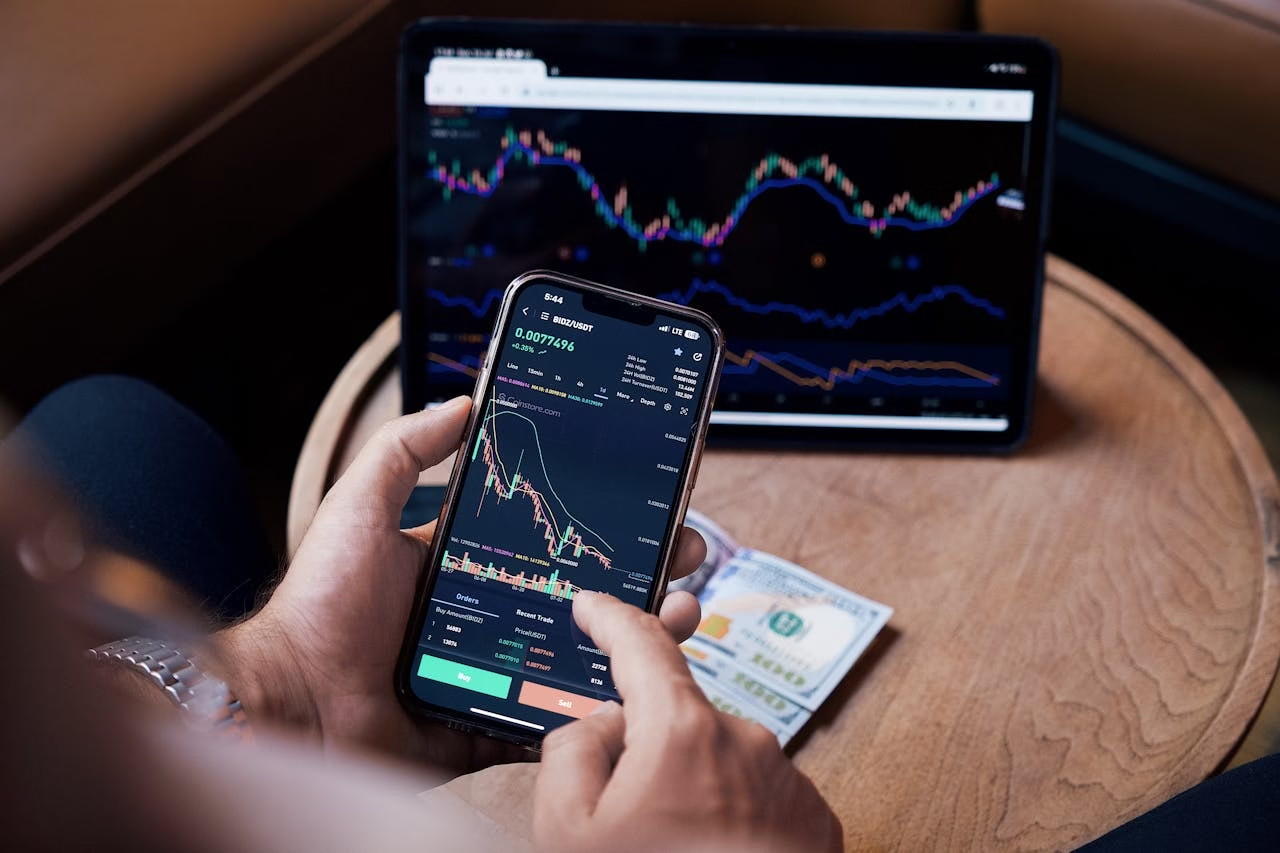
Cryptocurrency Trading Strategies for Beginners: Cryptocurrency trading can be a high-risk, high-reward activity. For beginners, finding your footing in the fast-paced crypto markets requires a solid grasp of the basics and a well thought-out strategy. In this section, we’ll explore fundamental trading strategies apt for new traders, risk management tips to protect your investments, and critical details for each strategy to help you make informed decisions.
Understanding Cryptocurrency Trading Categories:
Before digging into specific strategies, it’s essential to understand the main categories of cryptocurrency trading:
Day Trading:This method involves entering and exiting positions on the same day, capitalizing on short-term market movements.
Swing Trading:Swing traders hold their positions for days or weeks, taking advantage of medium-term trends.
Long-Term Holding (HODLing):This strategy is for those who believe in the long-term potential of a cryptocurrency. They buy and hold assets for months or years. Each of these categories comes with different risk profiles and requires varying levels of commitment and expertise.

The Basics of Cryptocurrency Trading Strategies For Beginners:
For beginners, a simple approach is often the best. Here are some basic Cryptocurrency trading strategies for beginners traders:
1. Day Trading: Day trading is about making the most of intraday price fluctuations. As a beginner, focus on:
- Technical analysis:Learn to read charts and understand indicators. Moving averages and RSI (Relative Strength Index) are good starting points.
- Liquidity and Volatility:Choose cryptocurrencies with high liquidity and volatility to provide more profit opportunities (while implying higher risk).
2. Swing Trading If you’re not keen on the the high stress of day trading, swing trading might be more suited:
- Trend Analysis:Learn to identify ‘the trend is your friend’ and look for momentum shifts that could indicate an entry or exit point.
- Risk Management:Use stop-loss orders to manage your exposure and protect against market reversals.
3. Long-Term Holding This strategy, also known as “HODLing” relies less on market timing and more on the Fundamental belief in your chosen cryptocurrency:
- Research: Understand the coin’s technology, use case, and potential for future growth.
- Diversification:Spread your risk by investing in multiple currencies.
Risk Management for Beginners:
Risk management is crucial, regardless of strategy. Here are some tips for managing your exposure as a beginner:( Cryptocurrency trading strategies for beginners )
1. Only Invest What You Can Afford to Lose: The volatility of cryptocurrency markets means it would help if you only traded with money you can afford to lose without harming your financial health.
2. Use Stop Losses: Automatic stop-loss orders can help prevent significant losses, particularly when you cannot monitor the market continuously.
3. Understand Leverage: Trading on margin can amplify gains, but it also increases the risk of substantial losses.
Emotional and Psychological Aspects of Trading:
Successful cryptocurrency trading isn’t just about knowledge and strategy; it also involves mastering the psychological aspects of trading. Here are some tips for developing the mental resilience required to handle the ups and downs of the market:
1. Stay Calm Under Pressure: Trading can be a high-pressure situation, especially with cryptocurrency’s volatility. Maintaining a level head helps in making rational decisions.
2. Avoid Overtrading: It’s easy to be swept up in the excitement and trade too often. Overtrading can lead to increased fees and poor decision-making.
3. Learn From Losses: Not every transaction will result in profit. Analyze your losses to understand what went wrong and how you can improve.
4. Keep Emotions in Check: Fear and greed drive traders to make hasty decisions. Develop strategies to manage these emotions effectively.
Strategy Examples and Case Studies:
While specific examples and case studies are beyond the scope of this overview; beginners are encouraged to learn from the experienced community. Online trading forums, webinars and crypto educational platforms can provide real-life examples of successful strategies. One notable strategy that has been successful for many traders is the Scalping technique used within the day trading category. Scalping involves making dozens or even hundreds of trades within a single day, aiming to capture small profits from minor price changes in the market.
Consider the case of Trader Jane applies scalping strategies effectively. She sets up her trading station with several monitors to track real-time price charts and has developed a keen eye for recognizing patterns and predicting short-term market movements. Jane might start her day early, focusing on high-volume coins to benefit from more significant price swings due to news events or market sentiment. Her trades often last just minutes and require fast decision-making and precise execution. Here’s how Jane might apply scalping in a typical scenario:
Strategy Setup: Utilises tight spreads and leverages technical indicators such as Bollinger Bands and the Stochastic Oscillator for entry and exit signals.
Risk Management: Sets strict stop-loss limits and only risks a small percentage of her capital on each trade.
Execution: Enters and exits trades quickly, sometimes taking profits after just a few seconds or minutes if her predetermined profit target is met. By the end of the day, Jane’s series of small gains could add up to a significant profit, demonstrating the effectiveness of scalping for those who can commit to its demands.
Strategy Details for Beginners:
For each strategy you choose to employ, ensure you have a clear:
Entry Strategy: Know when to enter the market, what signs to look for, and what conditions should trigger your trade.
Exit Strategy: Decide in advance when to take profits or cut losses.
Trading Plan: Document your strategy to maintain discipline and avoid emotional trading decisions. As you begin to apply these strategies and tips, it’s essential to stay informed about the ever-evolving cryptocurrency landscape. Technology shifts, regulatory updates, and economic changes can all impact the efficacy of your trading approach. Keeping abreast of industry news and technological advancements can provide you with a competitive edge, as can the following:
Continued Education: Dedicate time to learning more advanced technical analysis techniques and understand the underlying blockchain technology.
Market Sentiment Analysis: Gauge the mood of the market through sentiment indicators and social media trends, which can be as influential as traditional market indicators.
Networking: Joining cryptocurrency communities can help you stay on top of the market sentiments and trends, and provide support and advice from more experienced traders. Remember, successful trading is a journey; proficiency comes with experience, patience, and ongoing education. Continually evaluate the effectiveness of your strategies against current market conditions and be prepared to adapt your approach as necessary.
FAQ cryptocurrency trading for beginners:
Q. What is cryptocurrency trading?
Cryptocurrency trading is the process of buying and selling digital currencies, such as Bitcoin or Ethereum, with the goal of making a profit. Traders engage in this activity by speculating on the price fluctuations in the cryptocurrency market.
Q. How can I begin cryptocurrency trading as a beginner?
To start trading cryptocurrencies, follow these steps:
- Select a reputable cryptocurrency exchange.
- Create an account and complete the required KYC (Know Your Customer) verification.
- Deposit funds into your exchange account.
- Familiarize yourself with various trading strategies and market analysis techniques.
- Begin trading with small amounts to gain experience.
Q. What are some common trading strategies suitable for beginners?
Common trading strategies for beginners include:
- HODLing: Buying and holding a cryptocurrency for the long term.
- Day trading: Making short-term trades within a single day.
- Swing trading: Holding assets for several days or weeks to capitalize on price swings.
- Dollar-cost averaging (DCA): Regularly investing a fixed amount of money, regardless of market conditions.
Q. What is technical analysis, and how can I use it for trading?
Technical analysis involves studying historical price and volume data to predict future price movements. Beginners can utilize technical indicators, charts, and patterns to inform their trading decisions.
Q. What is fundamental analysis, and why is it important?
Fundamental analysis examines the underlying factors that may influence a cryptocurrency’s value. These factors include the project’s team, technology, adoption, and market sentiment. It aids traders in making informed investment choices.
Q. How can I manage risk while trading cryptocurrencies?
Managing risk is crucial in cryptocurrency trading. Risk management strategies involve setting stop-loss orders, diversifying your portfolio, and investing only what you can afford to lose.
Q. What are the risks associated with cryptocurrency trading?
Cryptocurrency trading carries several risks, including market volatility, regulatory changes, security breaches, and potential financial losses. It is essential to be aware of these risks and trade responsibly.
Conclusion:
Successful trading strategies vary widely in their approach, complexity, and suitability for different types of traders. As a beginner in the cryptocurrency market, start simple, be deliberate in your actions, stay informed, and always prioritize risk management. Remember, a well-designed trading strategy is your first step towards building a profitable cryptocurrency trading journey.
Disclaimer: This article is only informational purpose. Always remember that cryptocurrency trading involves significant speculation and market volatility. Conduct thorough research, trade responsibly, and consider seeking guidance from financial experts or mentors before entering the cryptocurrency trading.
You also read:
Cryptocurrency vs Stock Market which is better for investment






